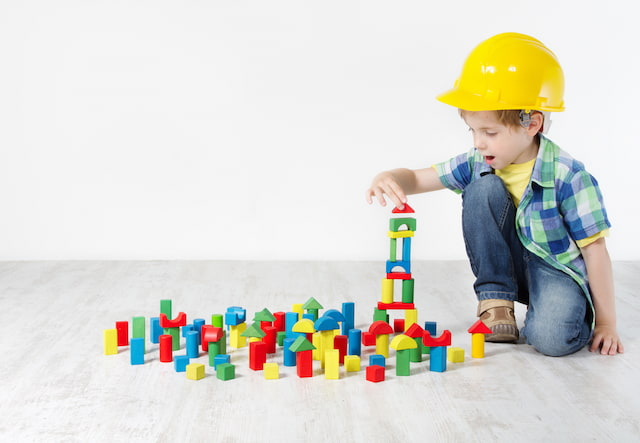Walk into any classroom of young children, and you’re bound to see a corner dedicated to building. Whether it’s wooden blocks, LEGO sets or creations of recycled cardboard, kids love stacking, balancing and inventing new structures. It looks like fun, and of course it is, but beneath the play lies something far more profound: The foundations of problem-solving, collaboration and creativity that children will use throughout their lives.
In fact, the lessons learned in these playful moments can mirror the skills required in the real world of engineering and construction. While students certainly don’t need IPAF training to build block towers in the classroom, their activities spark the same kind of thinking that grown-up builders and designers rely on every day.
Play as the First Draft of Learning
Play is often described as the ‘work of childhood’ – if childhood has a purpose, it’s developing skills, knowledge, experience and confidence through play. And nowhere is that more obvious than in construction-themed play. When a group of children work together to build a tall tower or design a mini-city from recycled materials, they’re doing more than having fun. They’re experimenting with balance, testing cause and effect and practising resilience as their structures collapse and get rebuilt.
These small moments of trial-and-error mimic the problem-solving processes of real engineers. In a professional context, training courses prepare adults for specialised tasks, whether it’s learning computer programming or operating heavy machinery. In the classroom, though, play acts as the first introduction to these same ideas in a safe, accessible way.
Teamwork at the Building Table
One of the greatest benefits of classroom building play is how naturally it encourages teamwork. A single child stacking blocks learns patience, but add two or three more into the mix, and suddenly the task requires communication and compromise.
This is a microcosm of real-world project management. Engineers, architects and construction workers all need to collaborate to complete a project. On a professional site, that might involve safety training and qualifications. In the classroom, the equivalent is simply learning to take turns, share resources and listen to each other’s ideas.

Creativity Meets Practicality
Children rarely follow the rules when it comes to building play and that’s part of the beauty. A castle might sprout rocket boosters or a bridge might double as a racetrack. While adults might chuckle at the unlikely designs, this creative approach mirrors the kind of innovative thinking that leads to breakthroughs in the real world.
The challenge for educators is to encourage this free-flowing creativity while also helping children think about practical constraints. How can we make the tower taller without it falling? What shape will give the bridge more strength? These guiding questions turn play into an introduction to design thinking, an approach used by professionals across many industries.
Bringing Construction Play into Every Classroom
Teachers can harness the power of construction play by making it a regular part of the learning environment. Activities don’t have to be complicated: A box of blocks, recycled cardboard tubes or even outdoor natural materials like sticks and stones can become the raw materials for big ideas.
By encouraging students to plan, test and adapt their designs, educators can create links between playful building and real-world problem-solving. More importantly, they give students the confidence to see mistakes not as failures, but as opportunities to try again – a mindset that will serve them in every stage of their education and careers.
Conclusion
From the outside, a classroom full of children building towers may look like little more than playtime. But teachers know better: those towers are built on foundations of creativity and teamwork. While no child needs IPAF training to balance a block on top of another, the lessons they learn in those moments prepare them for bigger builds ahead, whether that’s in their studies, their future careers or the everyday challenges of life.

